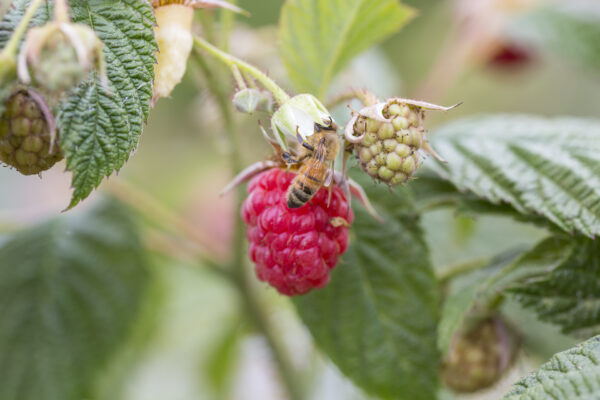junio 24, 2025
Posted in: News Articles
Flowers, and bees, and crops, oh my! Whether it’s a farm, a ranch, or even your urban backyard garden, pollinators – and encouraging the habitats that attract and sustain them – are integral to agricultural operations, biodiversity, pest control, and so much more.
To put into perspective the importance of these little but mighty creatures, the USDA notes, “three-fourths of the world’s flowering plants and about 35 percent of the world’s food crops depend on animal pollinators to reproduce. That’s one out of every three bites of food you eat.”
According to the Xerces Society, a science-based organization focused on promoting the conservation of pollinators and other invertebrates, when it comes to encouraging a diversity and abundance of native bees and other pollinators on working lands, their presence is “strongly influenced by two factors: suitable habitat on and near the farm, as well as pesticide exposure.”

Habitats for pollinators require sites for nesting or laying eggs, flowers on which to forage, places to overwinter, and spaces free of pesticides. Focused efforts to create habitats for pollinators is more important than ever. As noted by the USDA, pollinators are currently facing many challenges, including, “habitat loss, disease, parasites, and environmental contaminants.”
One great practice for those that own and manage larger properties are hedgerows. As defined by the Marin Resource Conservation District, “hedgerows are single or multiple rows of trees, shrubs, forbs and/or grasses planted along the edges of fields in working landscapes to support one or more goals.” Hedgerows can help in a multitude of ways, including providing habitat to pollinators, sequestering carbon, and supporting regional ecological health. You can learn more about the benefits of hedgerows via this useful summary >>
So, what else can we all do? Explore below to check out some excellent resources for how you can promote pollinators whether it be in on your farm or on your apartment patio!
- Looking to promote pollinators on your farm? The Xerces Society lays about a step-by-step guide for planning, preparing a site, installing, and maintaining pollinators habitat on your land: https://xerces.org/pollinator-conservation/habitat-restoration
- When it comes to choosing which plants, the Sonoma Resource Conservation District has a handy list of water-wise plants (aka those that need little to no irrigation once they’re established) that are perfect for our growing zone: Pollinator Conservation Resources: California
- Or maybe you have a small home garden or outdoor space where you’d like to encourage bees, butterflies, and more to stop by or stay a while? Xerces also has some great resources for home gardeners: https://xerces.org/pollinator-conservation/yards-and-gardens